British ZAK Terrahawk Paladin for Ukraine
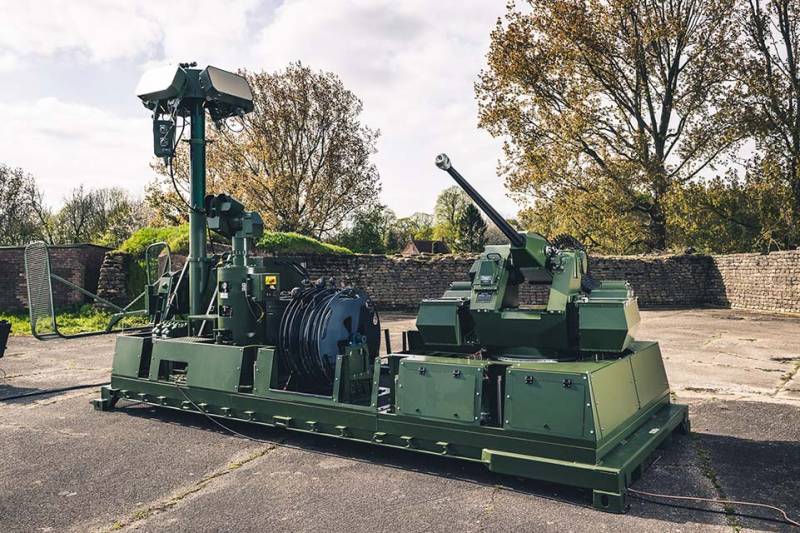
ZAK Terrahawk Paladin in combat position
A few days ago, the UK announced another package of military-technical assistance for Ukraine. Along with other property, they promised to transfer the latest Terrahawk Paladin anti-aircraft artillery systems to the latter. It is expected that such installations will help strengthen air defense and protect important facilities from attack unmanned aerial vehicles. At the same time, the specific appearance of this ZAK hardly allows one to count on outstanding results.
In a new package
On October 11, the British Defense Department announced the allocation of further assistance to the Kyiv regime. Through the so-called The International Fund for Ukraine, controlled by London, will spend £100 million on the supply of various weapons, ammunition and property. Moreover, most of this amount is approx. 70 million will go towards the purchase of air defense equipment.
First of all, ZAK is planned to supply a completely new model. It is reported that recently the UK Ministry of Defense and MSI-Defense Systems Ltd. (MSI-DS) signed a contract for the production of the promising Terrahawk Paladin complex. The parameters of this agreement have not yet been disclosed. The number of ZAKs ordered, their cost and delivery time remain unknown.
The Terrahawk Paladin product is offered as a specialized air defense system capable of combating unmanned aerial vehicles for attack purposes. It is assumed that the new British systems, alone or together with other foreign-made air defense systems or air defense systems, will allow the Kyiv regime to protect important facilities from Geraniums and other threats.
First contracts
The Terrahawk-Paladin transportable anti-aircraft artillery system is one of the latest developments in the British military industry. MSI-DS first introduced this product a year ago at DSEI 2022 in London. A prototype of the product was demonstrated, and its characteristics and functions were revealed.
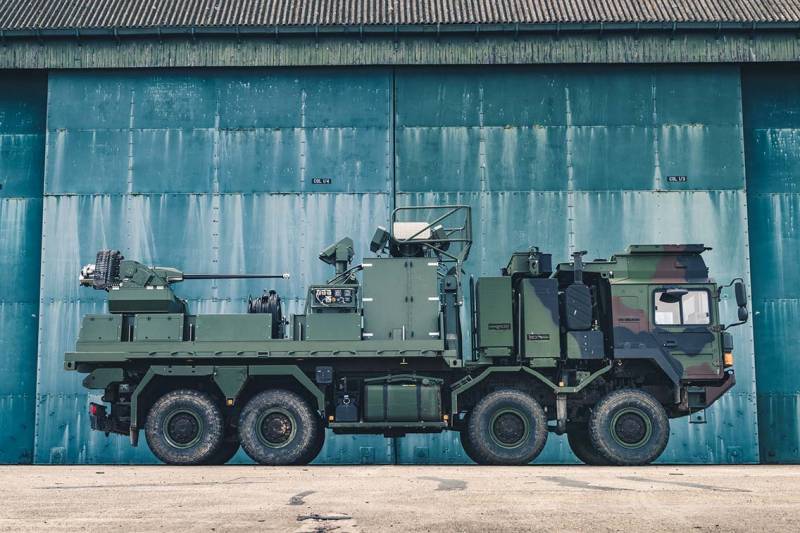
Complex on a truck for transportation
At the recent DSEI-2023 exhibition in September, the development company again showed its ZAK, and also boasted of its latest successes. It was reported that the complex has already attracted the interest of two customers. One batch of equipment will be sent to an unnamed country in the Middle East in the future. The second buyer has not yet been disclosed.
Information about the first orders for Terrahawk Paladin attracted the attention of the foreign press. In particular, attempts were made to guess the buyers. In accordance with the current agenda, it was suggested that one of the batches of the new ZAK could be delivered to Ukraine.
of the latter, News It follows that such assumptions were generally correct, but the real situation turned out to be a little more complicated. A batch of promising complexes will indeed be transferred to the Kyiv regime. At the same time, its formal customer is Great Britain, and the production will be paid for by the International Fund of Ukraine, which has received donations from several European countries.
Gun on a pallet
The Terrahawk Paladin product is a short-range ground-based anti-aircraft artillery system. The unit is transportable and is intended for long-term operation in one position. At the same time, in appearance and in its architecture, the product is noticeably different from other modern ZAKs with similar weapons and equipment.
The complex is built on a platform-pallet of standard dimensions. Its transportation is carried out by vehicles of the required carrying capacity. To place the ZAK in position, a crane is required, incl. own truck installation. After placing in position and connecting the necessary equipment, the product is ready for use.
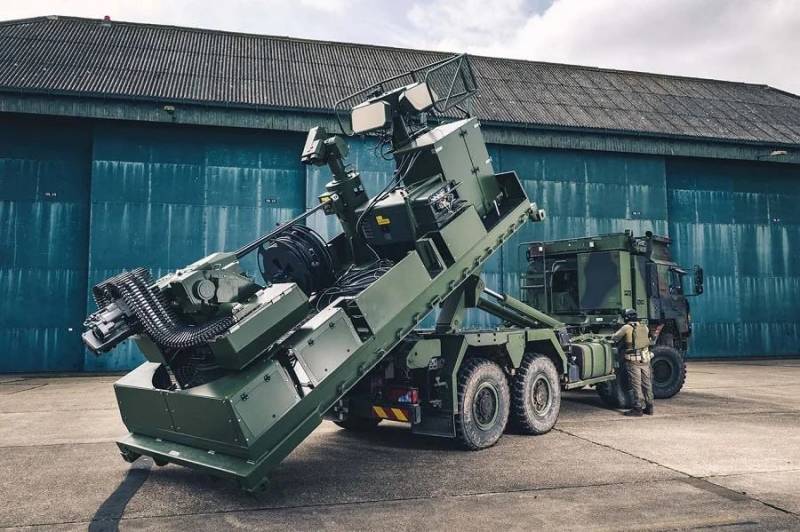
Unloading/loading process
At one of the ends of the pallet platform there is a low base on which a combat module with a weapon and auxiliary equipment is placed. In the center of the platform there is a cable reel and other auxiliary equipment, and at the other end there are masts with optical and radar stations. The radar antenna device in the stowed position is covered with lattice protection.
The Terrahawk-Paladin complex uses a small-sized SKYctrl radar developed by the Polish company Advanced Protection Systems. The station includes four small-sized AFARs of the FIELDctrl Advance type, placed on a lifting mast. Such a radar is capable of detecting large air targets at ranges of up to 30 km. At the same time, the detection distance for low-flying helicopters is reduced to 10 km, and for small UAVs – to 3 km.
Next to the radar is the SATOS optical-electronic station, developed by MSI-DS itself. It is designed to detect and track targets at short distances and control fire at any time of the day. There are day and night channels, as well as a laser rangefinder.
The complex is armed with a remotely controlled combat module MSI-DS Terrahawk LW - a modified version of the ship's Seahawk LW A2. This is a fully rotating device in the form of a machine for a swinging artillery unit with the possibility of using different types of guns. As presented, the module carries a 30-mm Mk 44 Bushmaster II automatic cannon manufactured by Northrop Grumman. The gun has an ammunition supply system with two belts loaded with different projectiles. It is possible to use air blast projectiles, for which a non-contact programmer is installed on the gun. Rate of fire – 100 or 200 rounds/min. With an initial projectile speed of at least 1000 m/s, the Mk 44 gun is capable of hitting targets at ranges of up to 2,5-3 km.
All Terrahawk Paladin ZAK equipment is combined with a digital fire control system. It has all the necessary functions for reviewing the air situation, searching and tracking, as well as firing at targets. The operation of the complex is controlled from two operator consoles. When deployed to a position, they can be placed away from the complex.
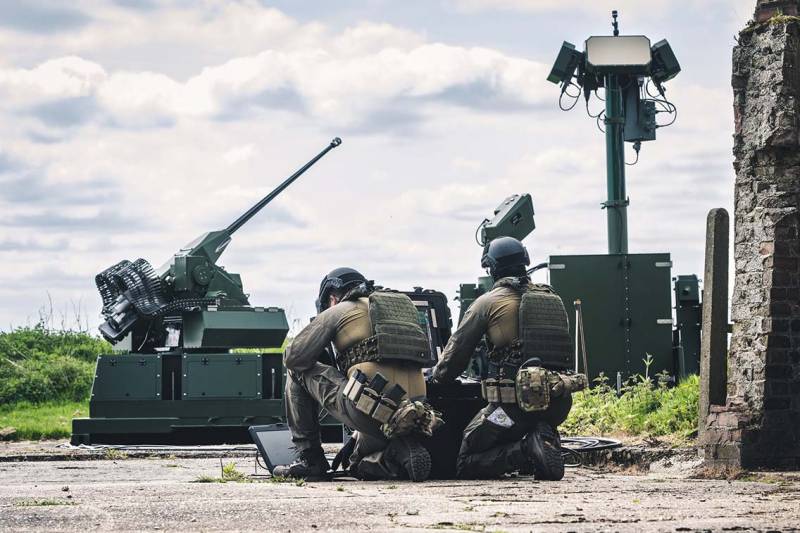
Complex and operators with remote control
Complex of typical composition
The promising Terrahawk Paladin ZAK from the British company MSI-DS is quite interesting. First of all, the curious architecture of the product attracts attention. Other developers of anti-aircraft artillery have not yet placed all the necessary equipment on one transportable pallet. Probably, due to this, the authors of the project wanted to ensure acceptable mobility and at the same time save on a self-propelled chassis.
Otherwise, the Terrahawk-Paladin differs little from other modern ZAKs of its class. A traditional composition of detection and control tools was used, which has known advantages. A ready-made combat module with a popular model cannon chambered for one of the standard NATO ammunitions was also used. In terms of combat characteristics, the product is also no different from other similar developments.
It can be assumed that the ZAK from MSI-DS is indeed capable of solving air defense problems in the near zone. Available devices and assemblies allow it to detect and track various targets over a fairly wide range of ranges and identify threats in advance. The 30-mm automatic cannon has high combat qualities, which can be further improved by introducing a programmable projectile. Remote control provides well-known advantages.
However, Terrahawk Paladin also has obvious disadvantages. First of all, this is the lack of ability to move independently and a rather long process of deployment/collapse. As a result, the ZAK is an easy target for any enemy fire weapons. If it can be detected, defeat remains only a matter of time and technology.
For effective combat use, such a ZAK must be included in a layered air defense system with the use of other radars and air defense systems. In such a system, this artillery complex will be protected from attacks and will be able to intercept UAVs and other targets that have broken through other layers of defense. In this case, it will have to be placed near protected objects due to the limited firing range.
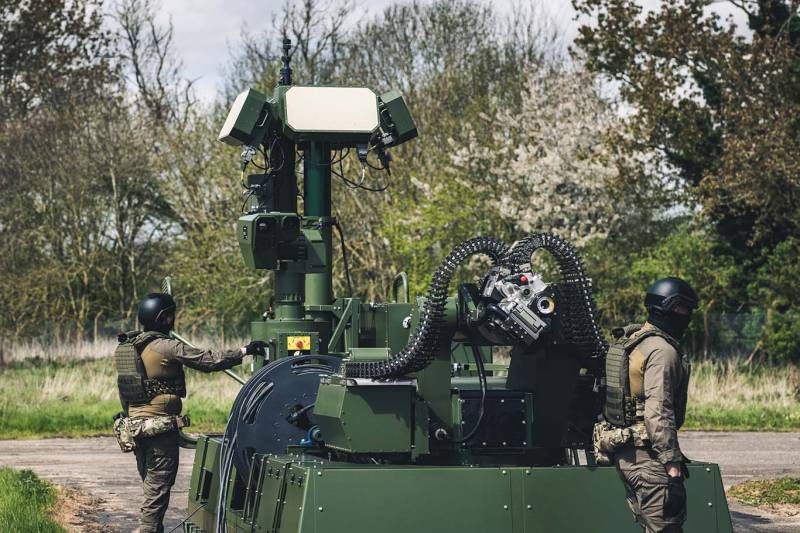
Ukrainian prospects
It became known that one of the first batches of ZAK Terrahawk Paladin will go to Ukraine. These complexes are planned to be used to protect objects from Russian attack UAVs, but other applications cannot be ruled out. It can be assumed that the effectiveness of such an application will not be too high, and the British ZAK will not live up to expectations.
First of all, the problem will be the insufficient number of transferred complexes. A batch of limited sizes will not allow reliably covering even key military and administrative facilities, incl. when used together with other foreign air defense systems. In addition, there is a high risk of detection and destruction of the ZAK right at the position.
It should be recalled that this is not the first attempt by the Kyiv regime and its patrons to solve the problem of massive Russian strikes. To intercept strike UAVs, various foreign-made artillery and missile systems were proposed. Despite all the advertising, they fail to cope with their task, thanks to which the Russian Drones and missiles successfully hit designated targets with minimal losses from air defense.
Advertising and Experience
British industry introduced the new Terrahawk Paladin ZAK about a year ago, and now we are talking about launching production and starting deliveries to customers. One of the recipients of such equipment will be the Kiev regime, and shipment is expected in the near future. Then, obviously, the complexes will show their inconsistency and inadequacy to the assigned tasks.
However, one should expect that the British and Ukrainian sides will simply deny the failures and losses of their ZAKs - as has happened more than once. MSI-DS will continue to advertise its development and look for customers, citing “positive experience” in real combat use. Time will tell who will fall for such “arguments.”
Information